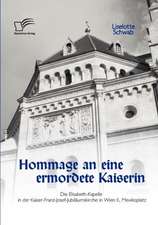Glittering Images
Autor Camille Pagliaen Limba Engleză Paperback – 12 aug 2013
Modern life is a sea of images. With so much visual data bombarding us—from personal devices to mass media—our brains must rapidly adapt to make sense of it all. Here to guide us is America's premier intellectual provocateur, Camille Paglia.
In these pages, Paglia returns to the subject that made her famous, situating our current visual environment within the epic scope of all of art history. With trademark audacity, Paglia tours through more than two dozen seminal paintings, sculptures, architectural styles, performance pieces, and digital art works that have transformed our world. Combining close analysis with historical context, she trains our eye to each image—from an Egyptian tomb to Jackson Pollock's abstract Green Silver to Renée Cox's daring performance piece Chillin' with Liberty. And in her stunning conclusion, she declares the avant-garde tradition dead and film director George Lucas the world's greatest living artist. Written with energy, erudition, and wit, Glittering Images will profoundly change the way we see.
Preț: 185.14 lei
Nou
35.44€ • 38.51$ • 29.79£
Carte disponibilă
Livrare economică 31 martie-14 aprilie
Livrare express 14-20 martie pentru 37.24 lei
Specificații
ISBN-10: 0307278026
Pagini: 224
Ilustrații: illustrations
Dimensiuni: 173 x 234 x 13 mm
Greutate: 0.62 kg
Editura: Vintage Publishing
Colecția Vintage Books
Recenzii
“Highlights Ms. Paglia’s impressive range and famously eclectic tastes. . . . [She is] a critic determined to teach the redemptive possibilities of patient, informed observation.” —The Wall Street Journal
“Riveting. . . . Revelatory. . . . Subtle, penetrating and sometimes funny.” —The Globe and Mail (Toronto)
“[Paglia is] an art-for-art’s-sake worshiper of art and literature whose close readings, influenced by Walter Pater and Sigmund Freud, are pyrotechnic and passionate.” —San Francisco Chronicle
“Dazzling. . . . Compulsively readable. . . . Paglia at her best. . . . The lean precision of the book is a marvel. . . . Her choices range from the classic and expected to the obscure and the startling. . . . Even her explorations of the more familiar works will have you marveling anew.” —Salon
“Paglia [is] an intellectual sensation. . . . Here we find Paglia’s bewitching eye, matched with her gift for language, at its best.” —City Journal
“Artists, questing outsiders, are still with us, still finding their way, making their way. Perhaps some of them will be inspired by the glittering images Camille Paglia offers here.” —Los Angeles Times
“An essential work by an essential public intellectual.” —Vice
“Paglia is a lively, bracingly outspoken writer able to draw on her knowledge of both fine arts and popular culture.” —National Post
“A fascinating, uncommonly accessible look at the history of images in Western art. . . . [Paglia is] an incisive cultural critic, a dedicated teacher and a nimble-minded writer.” —Cincinnati City Beat
“An intelligently detailed examination of 29 works of art, ranging from a tomb painting of Egyptian Queen Nefertari to George Lucas’ film Revenge of the Sith. . . . Paglia is a wonderful popularizer of art history and art appreciation.” —Kirkus Reviews
“Succinct, lively, and illuminating. . . . Paglia’s bold and rigorous, handsomely illustrated and welcoming art iconography will accomplish her mission to provoke, enlighten, and inspire..” —Booklist (starred)
“A valuable cultural critique and an elucidating history. . . . [A] highly reflective and imaginative history of images in Western art. . . . Paglia writes with energetic lucidity, and her entries on the Laocoön and Donatello’s Mary Magdalene are standouts in this absorbing volume.” —Publishers Weekly
“The ever-provocative Paglia returns. . . . She proclaims that the avant-garde is dead and that George Lucas is our greatest living artist. This will get the smart folks talking.” —Library Journal
Extras
Resurrection
Queen Nefertari
Ghosts carved out of time. Egyptian art is a vast ruin of messages from the dead. Clean and simple in form, Egyptian painted figures float in an abstract space that is neither here nor there. The background is coolly blank. Everything is flattened into the foreground, an eternal present where serenely smiling pharaohs offer incense and spools of flax to the gods or drive their chariot wheels over fallen foes. Hieroglyphics hang in midair, clusters of sharp pictograms of a rope, reed, bun, viper, owl, human leg, or mystic eye.
Resurrection was the master value of a civilization that dreamed of conquering the terrors of death. At the heart of Egyptian religion was a corpse—the mummy of the great god Osiris, swaddled in linen strips. Osiris was murdered and dismembered by his evil brother, Set, who scattered his fourteen body parts throughout Egypt. Isis, Osiris’s sister and devoted wife, collected and reassembled them—except for the missing penis, which she fabricated in wood or clay. As Osiris’s embalmer and enhancer, therefore, Isis acted as a resourceful proto-artist, assembling materials and molding a work of mummiform sculpture that would be reproduced in Egyptian art and cult for three thousand years.
Passage to the afterlife meant a descent to the underworld. Souls hoping for rebirth invoked Osiris and literally became him. Despite its preoccupation with death, Egyptian art is rarely claustrophobic. The beyond was no spectral twilight but a lively zone of physical needs and pleasures. Warehousing stools, chairs, tables, chests, clothing, perfumes, ointments, jewelry, games, daggers, boomerangs, chariots, and jars of extracted viscera, the tomb was a distillation of real life. The urbane aristocrats promenading across the walls are wide-eyed and cheerful as they face the great unknown. Their majestically enthroned guardian gods often seem faintly comic, with the large heads of birds, beetles, or hippopotamuses, vestiges of primitive animism.
Resurrection also symbolizes our modern recovery of Egypt. For a millennium after the fall of Rome, Egypt was wrapped in a haze of occult legend. After Islam’s arrival, it became a closed world whose pagan remains were ignored and neglected. Napoleon’s 1798 invasion helped start Egyptology: a French officer’s discovery of the Rosetta Stone led to the decipherment of hieroglyphics, while the immense, multivolumed report by Napoleon’s team of surveyors and scientists set off a craze for Egyptian style that swept European architecture and decor and would even produce America’s Washington Monument. Over the next century, thanks to photography, knowledge of Egypt was gradually spread throughout the world. The ancient Egyptians have finally achieved their immortality.
From earliest times through the Middle Kingdom, the rulers of Egypt were buried in sprawling necropolises at the desert’s edge near the Delta, as the Nile fans out -toward the sea. The principal sacred districts were at Saqqara and Giza, where the Great Sphinx, hacked out of bedrock, still guards Chephren’s mammoth pyramid. After a devastating Syrian invasion, the capital of Egypt was moved four hundred miles south to Thebes. There the upstart warrior pharaohs of the New Kingdom created their own cemetery facing toward the setting sun across the Nile—the Valley of the Kings, scarcely more than a dry gulch behind the high, horned escarpment of the Libyan Plateau. Pyramids or telltale markers of any kind were prudently avoided. The coffins were buried deep in the rock and the entryways heaped with rubble. Nevertheless, most tombs in the Valley of the Kings were looted within two centuries. One that escaped detection belonged to a minor king, Tutankhamen, who died young. When his tomb was found and opened in 1922, the staggering treasures, such as his solid-gold mummy case, gave tantalizing hints of what the grave goods of a star pharaoh must have been.
Royal wives and children were buried in the nearby Valley of the Queens, where eighty tombs (called “Houses of Eternity”) have been found. The most lavish one belonged to Nefertari, first and favorite wife of the imperialistic Rameses II, who sired at least forty-five sons from eight wives and who ruled for more than sixty years during the thirteenth century B.C.. Nefertari’s unusual status was signaled by her figure being made the same size as the king’s at her shrine at Abu Simbel, where four seated colossi of Rameses were cut from a Nubian cliff on the Nile. Nefertari (her name means “the Most Beautiful of Them All”) was of noble but not royal blood. She may have been a cousin or even a younger sister of Nefertiti, charismatic queen of the rebel monotheist ruler Akhenaten. Nefertari bore Rameses’s firstborn son, who died tragically young, perhaps inspiring the story in Exodus of God’s curse upon Pharaoh. (In Cecil B. DeMille’s epic movie The Ten Commandments, Anne Baxter plays a seductive Nefretiri to Yul Brynner’s arrogant Rameses.) Nefertari had at least five more children, but the robust Rameses (whose -well--preserved mummy survives in the Cairo Museum) outlived them all. Hence his successor, Merneptah, was the son of a lesser, rival queen.
Nefertari’s tomb was discovered in 1904 by Ernesto Schiaparelli, an Italian scholar and museum director. Sunk forty feet into the bedrock, it has a twofold axis aligned to the compass points and consists of two large ceremonial chambers, annexed by side chapels and niches and connected by a staircase. All that remains of the queen’s pink granite sarcophagus is a smashed lid. The tomb’s ceilings were painted midnight blue and spangled with gold stars to represent the heavens, while the walls and square columns were adorned with religious scenes and symbols. The raw limestone surfaces were first coated with a rough plaster of Nile mud, which was sculpted in low relief. A thin layer of fine plaster was then applied, upon which the designs were painted in tempera—always mineral pigments mixed with an unknown binder, perhaps a gum from the acacia trees of Thebes. A sparkling egg glaze was used as a sealant. Nefertari’s tomb would suffer damage from an earthquake and serious deterioration from rock-salt crystals slowly deposited behind the plaster by seeping rainwater. Thanks to a major rescue project by the Getty Conservation Institute in collaboration with the Egyptian Antiquities Organization (1986ߝ92), the tomb has been repaired, stabilized, and reopened to the public. The conservators’ meticulous cleaning and consolidation (with no new paint whatever) have revealed the murals’ still brilliant color.
The paintings are a narrative of Nefertari’s journey toward the afterlife. She is presented as a pilgrim soul seeking justification and resurrection. There are oddly few references in the tomb to her husband and none to her children or life story. Everything is focused on Nefertari’s spiritual quest. Respectful yet confident of her worthiness, she is a plucky, solitary wayfarer confronting the awesome powers and mysteries of the cosmos. Demons wait to pounce at each of five gates (out of a traditional twelve) leading to Duat, the netherworld. But Nefertari knows the sacred formulas, passes her test, and wins resurrection, proved by her being repeatedly called “the Osiris.”
Notă biografică
Camille Paglia is University Professor of Humanities and Media Studies at the University of the Arts in Philadelphia. She is the author of four previous books: Break, Blow, Burn; Sexual Personae; Sex, Art, and American Culture; and Vamps & Tramps. She has also written The Birds, a study of Alfred Hitchcock.
Cuprins
Introduction
1 Resurrection: Queen Nefertari
2 Mystic Vision: Idols of the Cyclades
3 The Race: Charioteer of Delphi
4 Roof of Air: Porch of the Maidens
5 God’s Snare: Laocoön
6 Sky of Gold: Saint John Chrysostom
7 Living Letters: The Book of Kells
8 Solitary Watcher: Donatello, Mary Magdalene
9 Island of Love: Titian, Venus with a Mirror
10 Lord of the Sea: Agnolo Bronzino, Portrait of Andrea Doria as Neptune
11 Blaze of Glory: Gian Lorenzo Bernini, Chair of Saint Peter
12 Satin Knights: Anthony Van Dyck, Lord John Stuart and his Brother, Lord Bernard Stuart
13 Swirling Line: The French Rococo
14 Martyr of the Revolution: Jacques-Louis David, The Death of Marat
15 Arctic Ruin: Caspar David Friedrich, The Sea of Ice
16 City in Motion: Édouard Manet, At the Café
17 Melting Color: Claude Monet, Irises
18 Heaven and Hell: Pablo Picasso, Les Demoiselles d’Avignon
19 Heart of Stone: George Grosz, Life Makes You Happy!
20 Dance of the Mind: Tamara de Lempicka, Portrait of Doctor Boucard
21 Luncheon in the Twilight Zone: René Magritte, The Portrait
22 Romance of the Grid: Piet Mondrian, Composition with Red, Blue, and Yellow
23 Elegance at Ease: John Wesley Hardrick, Xenia Goodloe
24 Shooting Stars: Jackson Pollock, Green Silver
25 Sun and Rain: Andy Warhol, Marilyn Diptych
26 On the Road: Eleanor Antin, 100 Boots
27 Electric: Walter De Maria, The Lightning Field
28 Blue Dawn: Renée Cox, Chillin’ with Liberty
29 Red River: George Lucas, Revenge of the Sith
Acknowledgments
Index

















